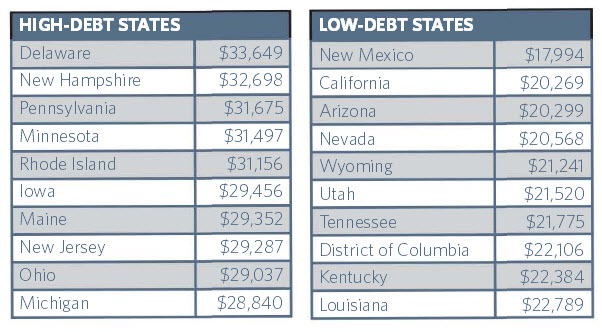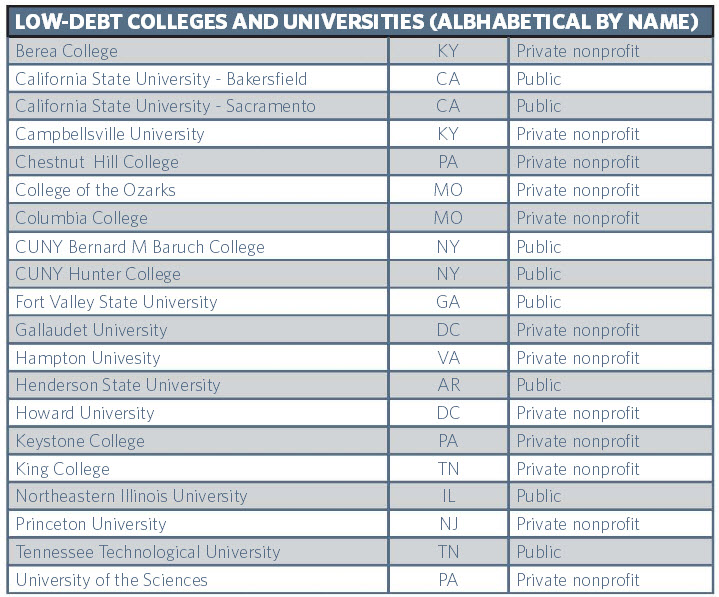Student debt has grown exponentially in the last couple of decades to a point where many families are actively seeking options and alternatives to reduce their share of school loans.
In 2012, 68 percent of all students graduating from four-year, not-for-profit public and private universities graduated with an average of $27,850 of debt per student. In other words, more than two thirds of students attending not-for-profit colleges in the U.S. are graduating with a sizable amount of college-related debt.
Looking at the Bigger Debt Picture
Low Debt States
Some states typically have higher debt averages among college graduates than others. New Mexico, for instance, is one of the lowest debt states for colleges with the typical debt, upon graduation, coming in at less than $18,000.
In contrast, Delaware, is on the other end of the scale with the average graduating debt at over $33,000. California, somewhat shockingly, offers the second lowest debt levels for the average graduate at just over $20,000.
Other general debt considerations involve the type of college. Public, not-for-profit colleges generally leave students saddled with less debt than private not-for-profit colleges and significantly less than “for profit” colleges.
“For profit” colleges and universities, such as DeVry University, Capella University, and University of Phoenix, are educational institutions that are operated as businesses. Their primary aim is to provide a better return on investment for their shareholders. They tend to enroll students who are several years out of high school and many offer online courses in an effort to keep administrative costs low.
Low Debt Colleges
In addition to choosing colleges in low debt states, consider looking for low debt colleges within those states. You may be surprised, even shocked, to discover that many of the low-debt colleges on the list are private colleges, with Berea College in Kentucky topping the list. Also included, Princeton University in NJ, King College in TN, College of the Ozarks in MO, Gallaudet University in DC, and Hampton University in VA.
Public colleges that make the list include California State University (at Bakersfield and at Sacramento), CUNY Bernard M Baruch College, CUNY Hunter College, Tennessee Technological University, and Northeastern Illinois University.
Don’t forget to consider out-of-state tuition with these colleges. Consider the University of Michigan; a relative bargain for in-state students, the out-of-state fees at this school move it to the list of some of the most expensive schools in the country — private or public.
Mitigating High Student Debt
There are several ideas floating around for ways to mitigate high student debt. With a little work, some of these options may become available to students on a wide scale in the coming years.
Allow Students to Apply for Aid Earlier
One of the most compelling ideas to allow students to apply for financial aid earlier. Many students are unable to apply for aid until well after the deadline for admissions has passed because they do not have the required tax information. Allowing students to use the previous year’s tax information when applying for financial aid allows students to have an estimate of available aid when selecting and applying for colleges.
Increase Pell Grant Amounts to Compensate for Rising Costs
Pell Grants are the primary tools low income families use to help cover some of the rising costs of college. Unfortunately, the grants have not been increasing as rapidly as tuition and other associated costs of attending college. Doubling the current maximum Pell Grant award allows students the opportunity to graduate with greatly reduced student debt.
Small changes and a little advanced planning can greatly reduce the financial burdens students carry with them from college into their first jobs. Keep these things in mind as you work to find the right college for the right price to meet your educational needs.
You might also be interested in our thoughts on paying for college


